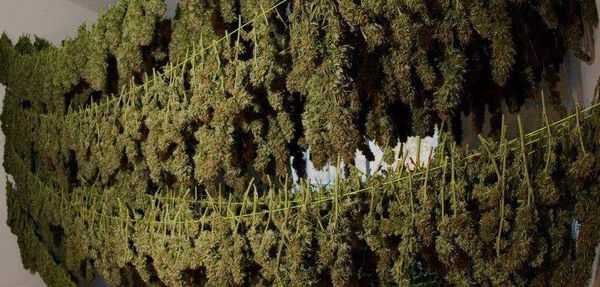The Importance of Testing Cured Cannabis
The cultivation of cannabis traditionally ends with the harvest of the mature cannabis plants. Plants grown for different purposes are harvested at slightly different points in their life-cycle. For example, the starting material for live resin (full-spectrum extracts) is harvested about a week before full maturity, in order to preserve a richer terpene content.
Regardless of its harvest point or cultivar, all cannabis destined to be consumed as virgin flower begins its journey out of the soil by desiccation. Desiccation is the chemical or physical process of removing moisture from a sample, be it flora or fauna, mineral or botanical. There are many common examples of desiccation in everyday life around us. If your phone has ever fallen in water, you know that putting it in a bowl of rice will help take the water out—and if you’re lucky, save your phone! That’s an example of a physical desiccation process.
Drying cannabis, also known as ‘curing,’ increases its shelf life, prevents mold and mildew formation, and preserves its taste. It’s also what lets consumers initiate the chemical reaction of combustion. So curing is important for lots of different reasons.
However, just because your cannabis is cured does not mean your process is now complete. Cured cannabis, whether destined to be processed or smoked, must be analyzed scientifically. Why? Because examination with the human senses is not enough to determine many important aspects of the product.
Beyond the obvious parameters of cannabinoid and terpene content, manufacturers have a vested interest in establishing high-quality, rigorous post-drying testing protocols. Whether in-house or at send-out facilities, checking the moisture content of the cured cannabis will serve as an excellent quality assurance measure and is preventative for mold and mildew occurrences, potentially saving companies hundreds of thousands of dollars a year in spoiled inventory.
Companies intent on processing would greatly benefit from pre-emptive pesticide testing as well, with many state’s strict requirements on absolute levels of chemicals. Extraction and distillation serves to concentrate the volume of a sample. Knowing the pesticide levels before extraction would enable the extrapolation of the final chemical concentration, and whether or not it will fall within accepted limits.
Preventative medicine is the key to long life. Preventative testing is the key to canna-business.








